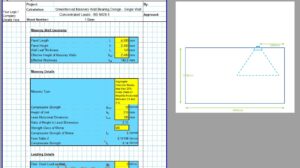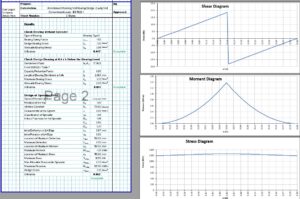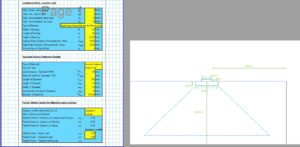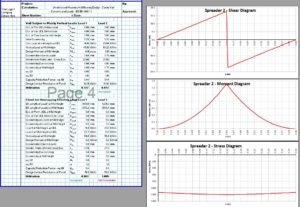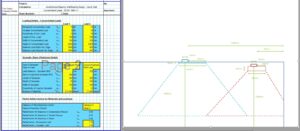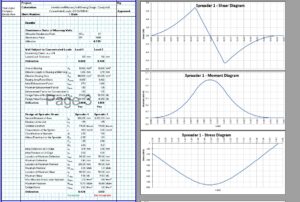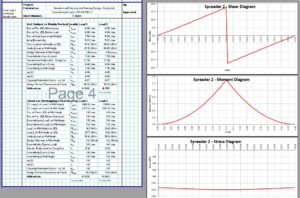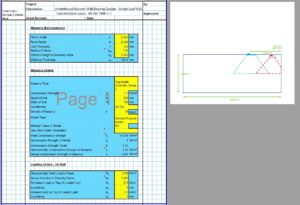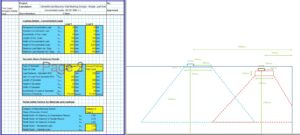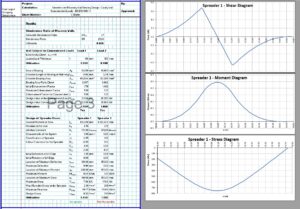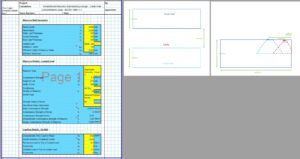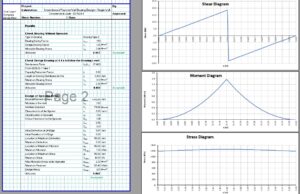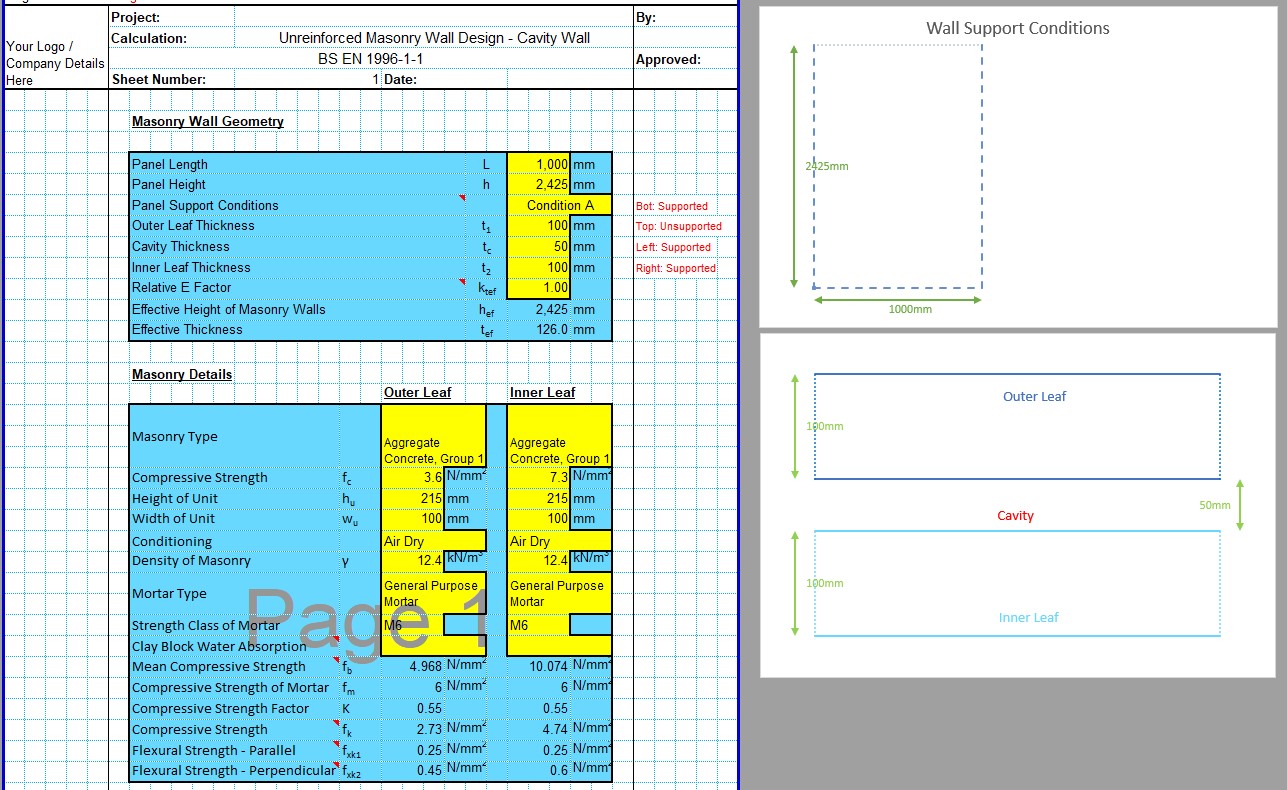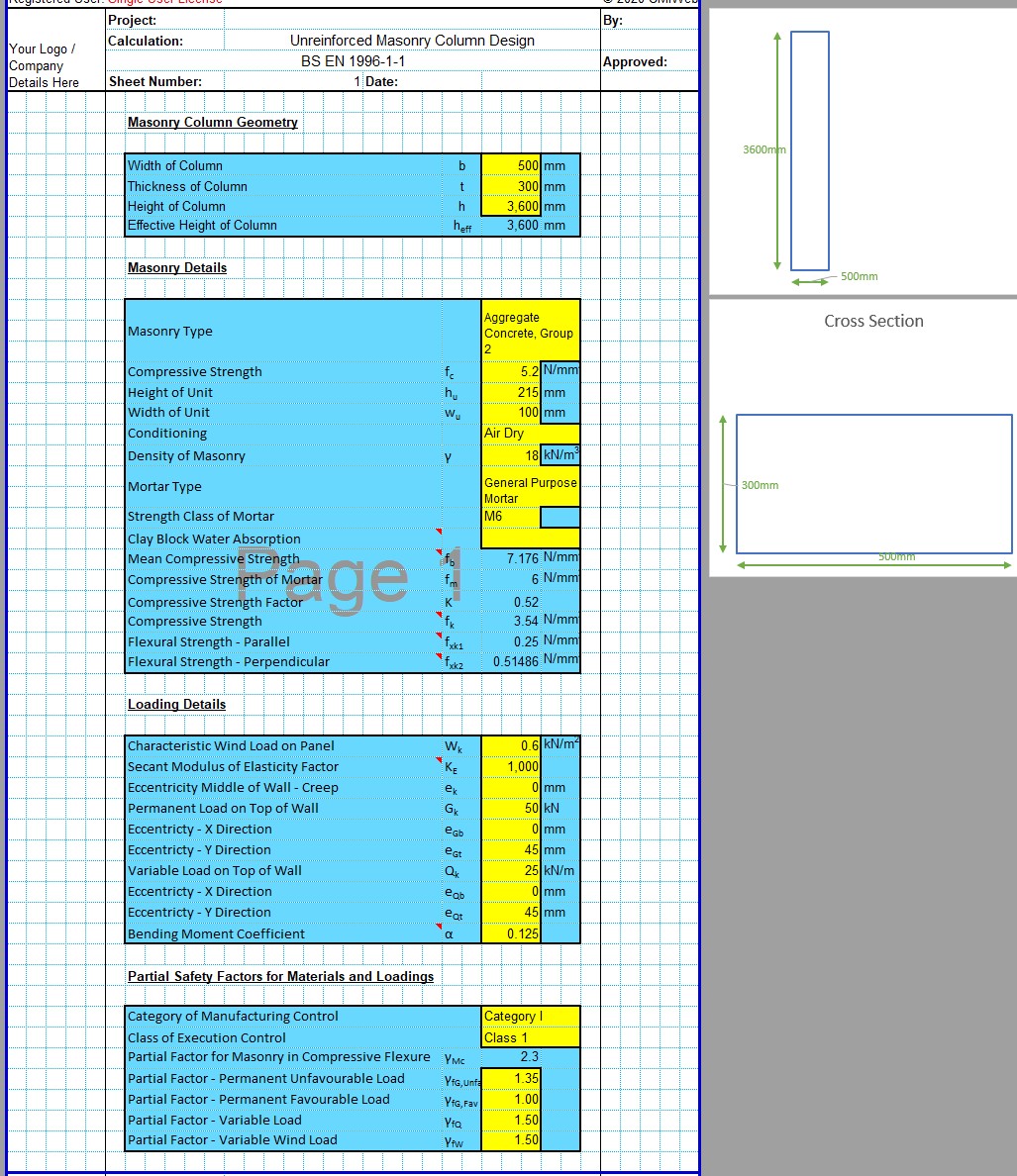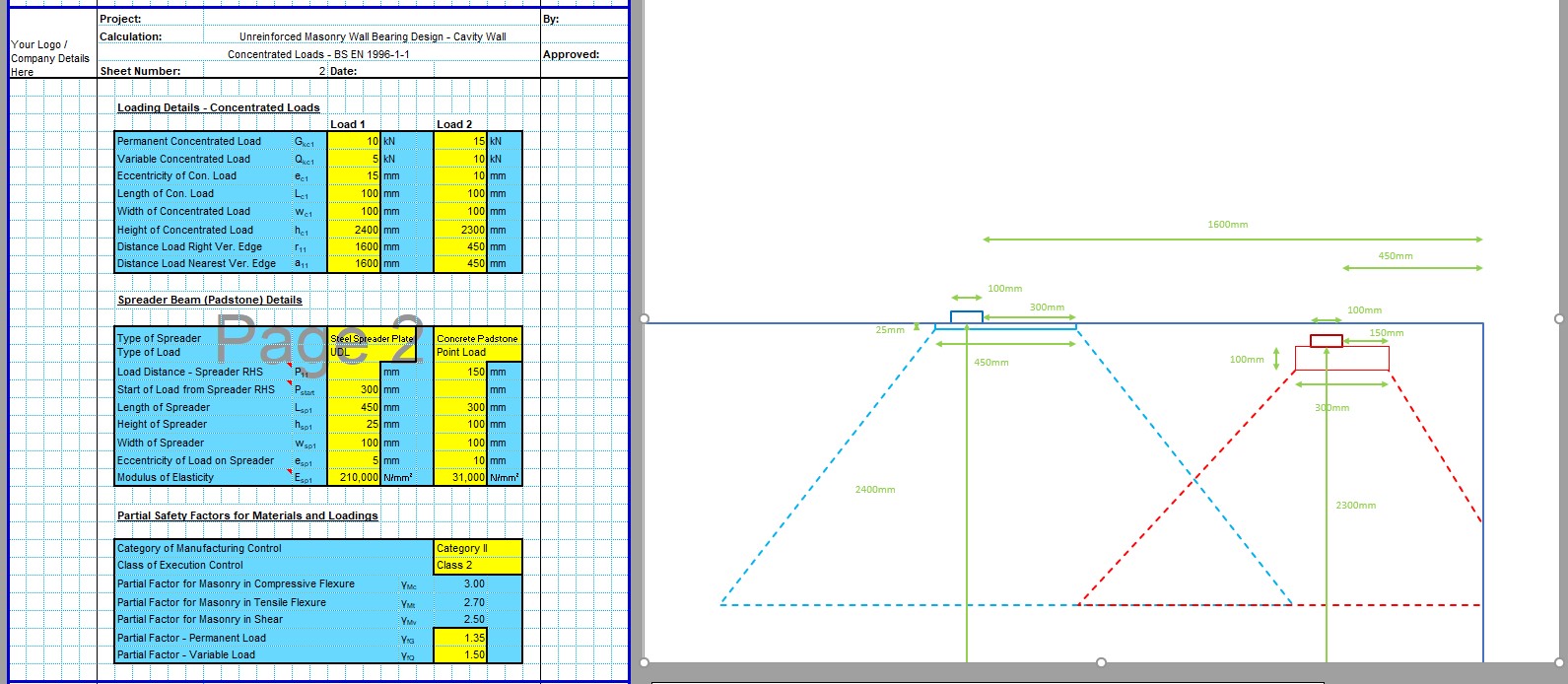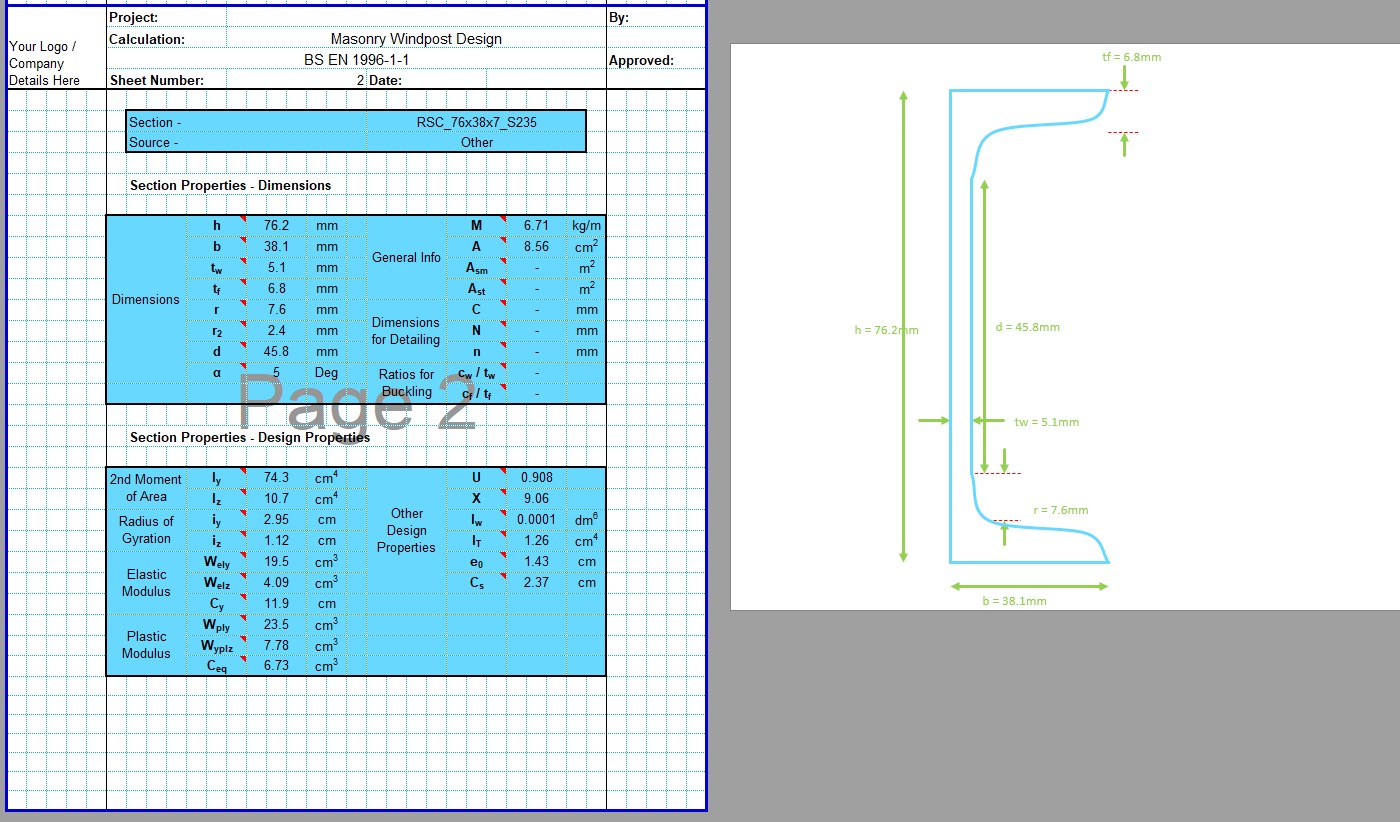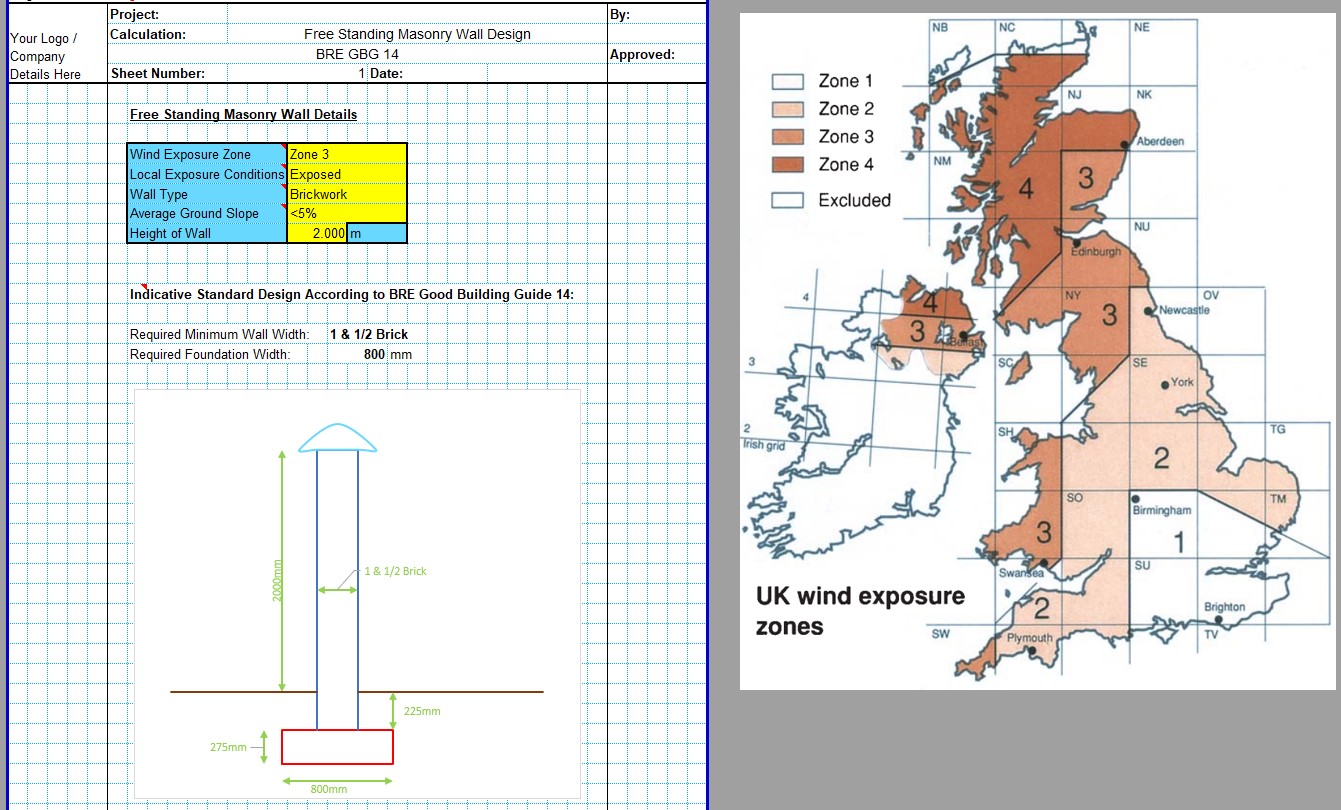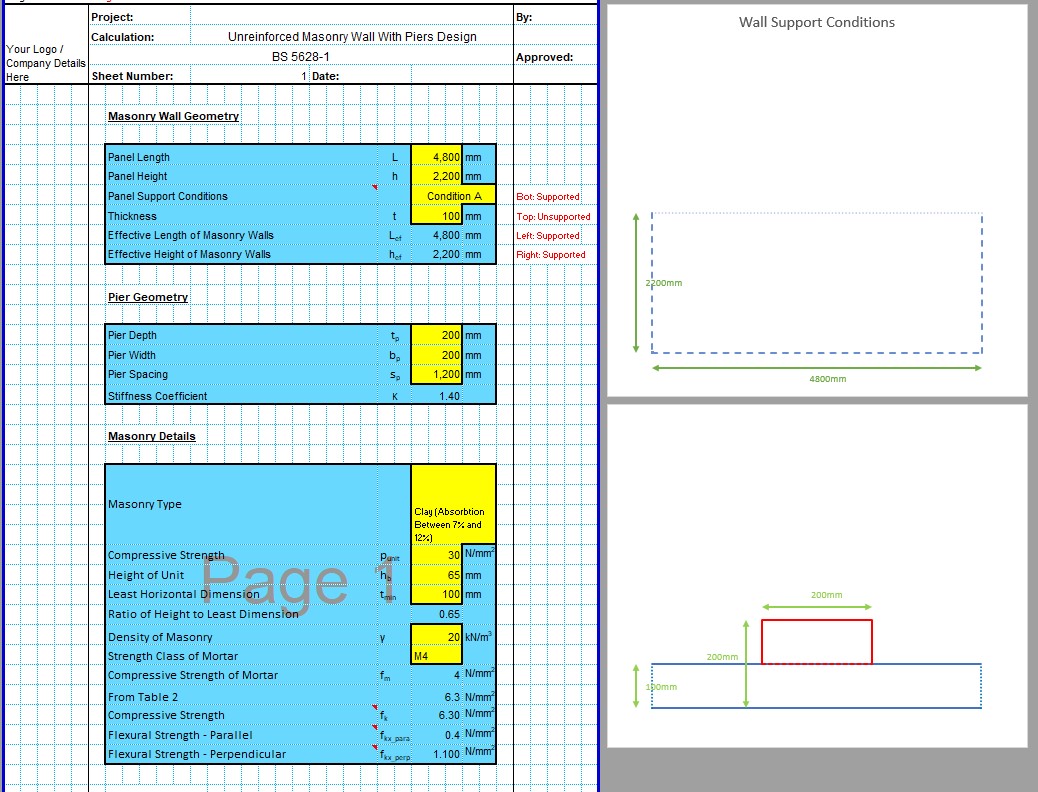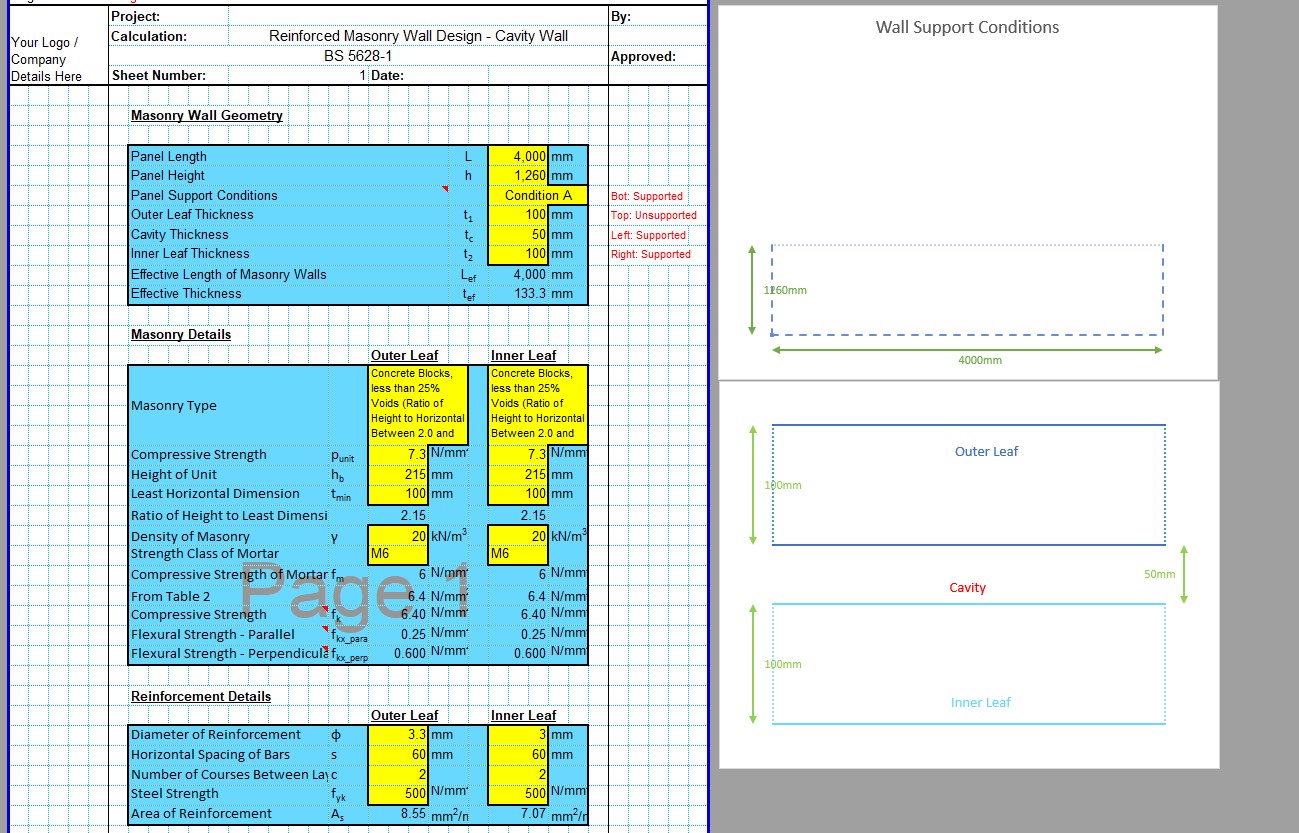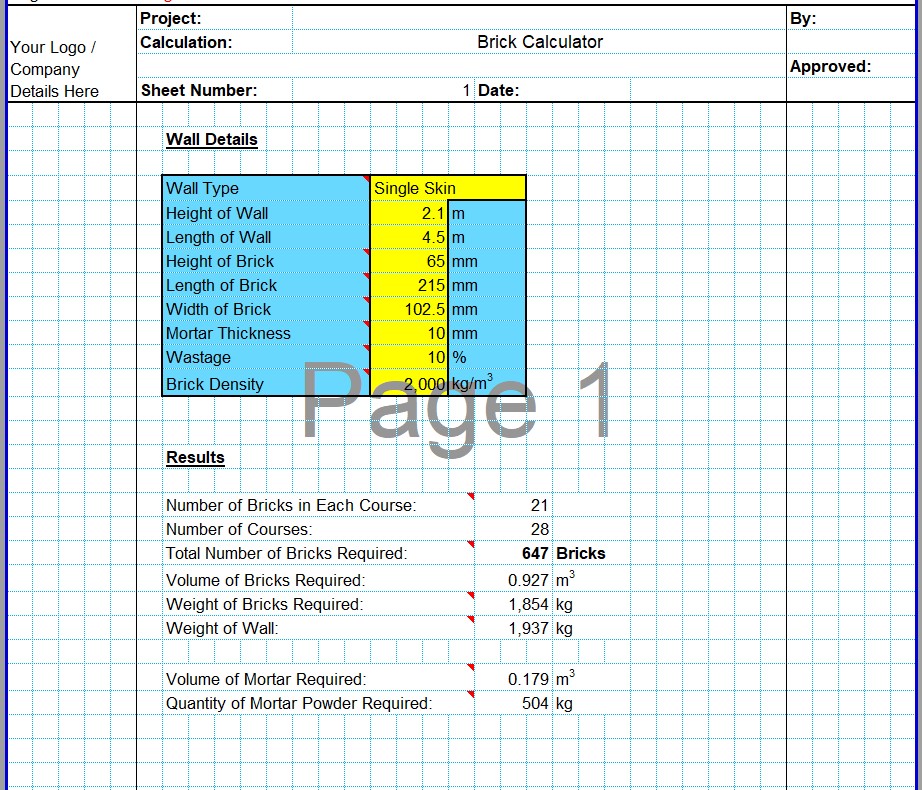The CivilWeb Padstone Design Spreadsheet is a powerful yet easy to use spreadsheet for the design of padstones and spreaders for masonry walls subjected to bearing loads such as those from lintels and beams. The spreadsheet completes the padstone design in accordance with either BS EN 1996-1-1 or BS 5628-1 and includes unique design features enabling the design to be completed in minutes. The spreadsheet has been designed to be powerful enough for professionals looking for an optimised design and easy enough to use for homeowners, architects and other non-professionals looking to complete a simple design. The CivilWeb Padstone Design Spreadsheet can be purchased below for only £19.99.
Or why not purchase our full Masonry Design Suite? The full suite includes all ten of our masonry design spreadsheets at a discounted price of only £49.99 (75% discount). The full suite can be purchased at the bottom of this page.
We also do lots of consultancy designs for masonry walls, columns and associated works. Please follow the link for further information.
Padstones and Spreaders
Padstones or spreaders are used on masonry walls where bearing forces from beams, lintels and other direct loads are too great for the masonry wall to resist on its own. This is commonly the case with beams and lintels as masonry walls are not particularly well suited to resisting these large concentrated loads. Padstones or spreaders are strong enough to spread the concentrated loads from a beam into a large enough area for the masonry wall to resist the load.
Padstones or spreaders are usually made of reinforced concrete though they can also be made from steel plates. The padstone must be strong enough to resist the concentrated load from the beam and also large enough to spread this force over a large enough area to prevent the masonry wall from becoming over stressed.
Masonry walls are not particularly well suited to large concentrated loads such as those created by a beam or lintel bearing onto the wall. Also, lintels are usually bearing onto the end of the wall which reduces the area of wall resisting the load by half as the load can only be spread in one direction. For this reason padstones are very commonly used for lintels and beams located at the ends of masonry walls.
Padstone Design
The CivilWeb Padstone Design Spreadsheet has been designed with ease of use as the main priority. To this end we have reduced the number of inputs required to a minimum so that non-technical users can use the spreadsheet to design simple padstones. The spreadsheet consists of two separate sheets covering padstone design and analysis in accordance with either BS EN 1996-1-1 or BS 5628-1.
The required inputs are also pre-set with standard inputs taken from the relevant standards. These pre-set inputs include masonry types, mortar types, partial action and material factors. This makes completing the inputs as easy as possible, even for non-professionals.
The spreadsheets also include unique dynamic drawings of the wall plan and cross section including the concentrated loads and padstones. The diagrams also show the concentrated loads zones of influence, showing whether they overlap or not. These diagrams show the user the geometry of exactly what has been entered for the wall, eliminating the risk of inputs being entered incorrectly.
The CivilWeb Padstone Design Spreadsheet requires the following inputs;
- The basic geometrical details of the wall including wall height, length and leaf thicknesses for either cavity or single leaf walls.
- Details of the masonry bricks or blocks used including masonry type, strength, height and width, mortar type and mortar strength.
- General loading conditions acting on the wall including lateral wind loads.
- Details of the concentrated loads including load force and location. (The BS EN 1996-1-1 version includes for up to two separate loads, the BS version only allows for one concentrated load).
- Details of the proposed padstone including concrete or steel, UDL or point load, size and location of the spreader relative to the concentrated load.
- Partial material and action factors. These are pre-set from the relevant standard, though they can be adjusted if required in order to suit alternative standards or loading conditions.
The CivilWeb Padstone Design Spreadsheet can then complete the calculations for either cavity or single leaf walls, in accordance with either BS EN 1996-1-1 or BS 5628-1. These calculations include the following;
- Check of the slenderness ratio of the wall
- Check the walls concentrated load resistance including enhancement factors. This checks whether the wall requires a spreader or not.
- Next the spreadsheet completes an analysis of the proposed padstone or spreader using a beam on elastic foundation analysis. This is used to the determine the location and magnitude of the maximum shear forces, bending moments and deflections.
- This analysis is then used to check the design of the padstone. The maximum deflection is used to calculate the maximum stress, which is then compared to the maximum allowable stress beneath the spreader, to check the spreader is large enough.
- After this, the spreadsheet calculates the vertical load acting on the wall and checks that this is less than the walls maximum vertical load resistance.
- Finally the BS EN 1996-1-1 version checks that where the influence zones of the two concentrated loads will not overload the wall.
The results of these calculations are presented in a very clear and easy to understand manner. This includes a utilisation factor which shows the user exactly how much of the capacity of the wall is being used. A value greater than 1.0 means the wall is not suitable for the loads, a value below 1.0 shows the wall is strong enough. This can be used to see firstly whether the wall is adequate for the load, and secondly can be used to see whether the wall can be made more economical. For example a utilisation value of 0.5 shows that only half of the walls load resistance is being used, allowing the designer to go back and adjust the wall design if necessary. The spreadsheet also includes the results in either green or red, showing the user at a glance whether the design is adequate or not.
CivilWeb Padstone Design Spreadsheet
The CivilWeb Padstone Design Spreadsheet is an easy to use and flexible spreadsheet for the design of padstones and spreaders for concentrated loads acting on masonry walls. The spreadsheet checks whether a padstone or spreader is required, then completes all the calculations required to design the padstone. All the calculations are completed instantly, allowing professional or non-professional users to design a wall subject to concentrated loads in minutes.
Buy the CivilWeb Padstone Design Spreadsheet now for only £19.99.
Or why not buy our best value full Masonry Design Suite including all ten of our Masonry Design Spreadsheets for only £49.99.
Download Free Trial Version
To try out the free trial version of this software, please enter your email address below to sign up to our newsletter and we will send your free version now.

